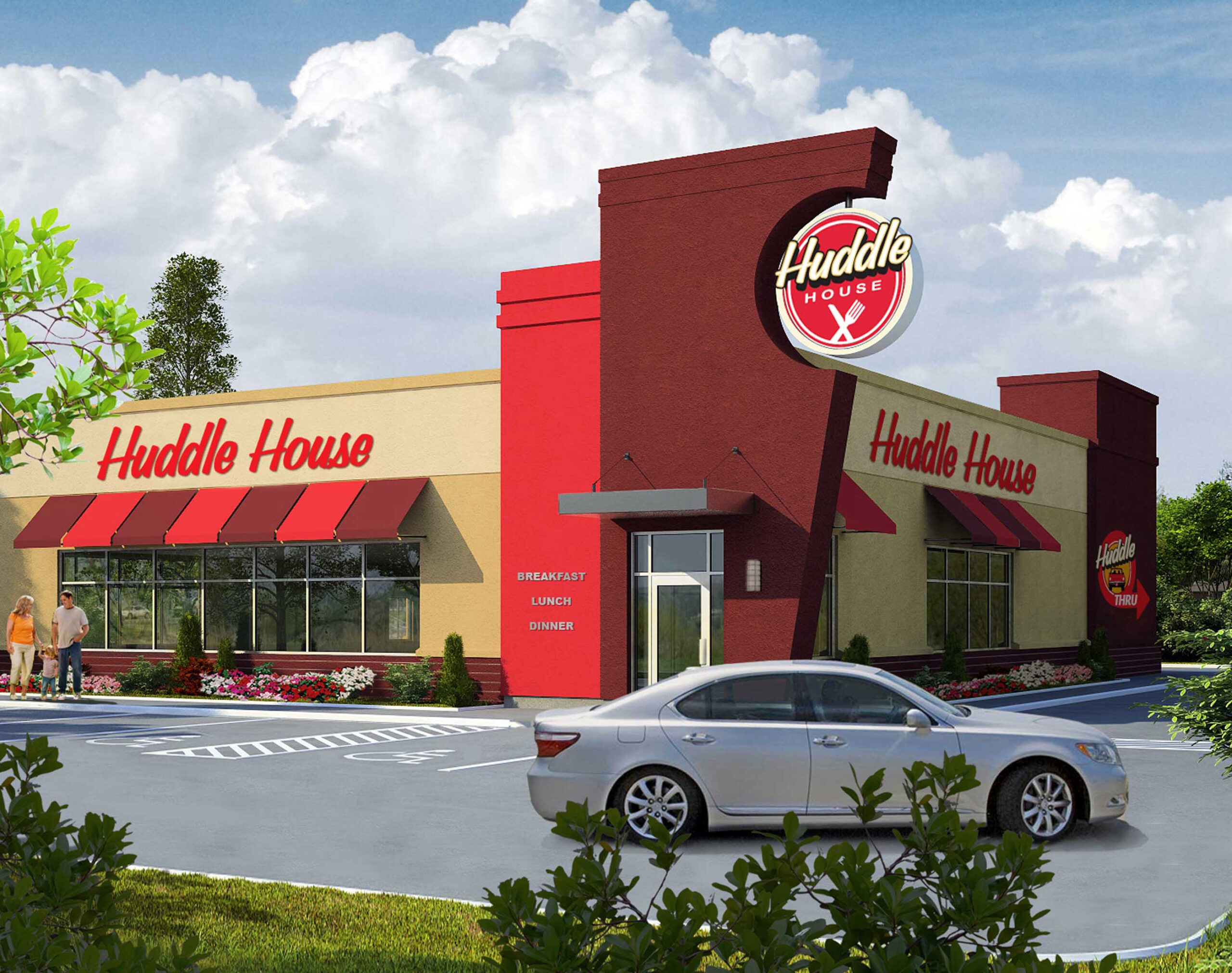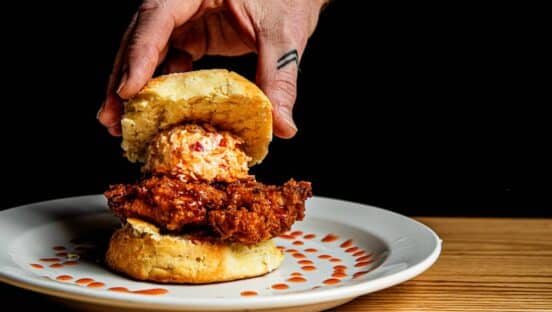As the old saw goes, “Necessity is the mother of invention,” and to put it mildly, the Great Recession bred a lot of necessity.
For the quick-service sector, the deprivation cut several ways. There was the “trading down” phenomenon, where some cash-strapped consumers chose fast-casual establishments instead of the full-service experience they might have opted for in better times. But more consumers overall were eating at home as their disposable income dwindled and their anxiety rose, and all segments of the restaurant industry took a hit.
As the commercial real estate market took a nosedive, there also was suddenly an opportunity for franchisors to negotiate better deals on better locations in markets that had previously proved tough to penetrate. This might have been a consolation of the economic calamity, except that credit streams had frozen so solid you could skate on them. In this climate, those in the industry who wanted to expand went begging at one bank after another.
These are sink-or-swim conditions. So it is not surprising that in the last two years, restaurants have been innovating at a pace that is unusual for a historically slow-moving industry. From the food trucks rolling through more neighborhoods to the industry’s late but enthusiastic adoption of social media marketing, restaurants have shown an impressive capacity to adapt in hard times.
Another strategy that has picked up steam during the recession is the mixed-service model, where restaurant brands offer their customers both full-service and quick-service experiences, sometimes under one roof. While this is not an entirely new phenomenon, it is becoming more common as consumer preferences become less monolithic.
“A mixed-service format is probably on the horizon for a number of restaurants,” says Darren Tristano, executive vice president of Chicago-based food consultancy Technomic. “Mixing limited and full service together is a great combination.”
One company that already employs the strategy successfully, Tristano says, is Minneapolis-based Buffalo Wild Wings, which offers fast-casual and full-service options throughout the day. Other brands, like Le Grande Orange Café in Santa Monica, California, a Lettuce Entertain You restaurant, offer limited service during breakfast and lunch and then switch over to a full-service model in the evening.
“It’s kind of the best of both worlds,” Tristano says. “As you move away from that fast-casual need, the full-service picks up and all of sudden it’s like you’re running two completely different restaurants.”
Of course, time was when few operators would have wanted to run two different restaurants under one roof. The goal is brand consistency, after all. Tristano says the trick is maintaining brand identity while adapting to new consumer preferences.
“There’s always that risk of confusing the consumer,” he says. “But this mixed-service model tracks better with consumer schedules.”
People are far more “time crunched” in the morning and during lunch, Tristano says. But in the evening they have time to enjoy a slower meal, and they are willing to pay more for it.
The potential for high ticket averages is what convinced Randy Murphy, president and CEO of Mama Fu’s, a chain of “Asian houses” based in Austin, Texas, to start implementing what he calls “flex casual” service in 2006. Before he took over, Murphy was Mama Fu’s biggest franchisee. He liked how well the fast-casual model did during lunch, but he wanted to find a remedy for the sales drop-off come evening.
So after taking the reins, he decided to turn select Mama Fu’s locations into full-service establishments by night. Now with more than 10 flex-casual locations, Mama Fu’s is “predominantly a dinner-driven concept,” Murphy says.
“We firmly believe that for lunch people do want to get in and get out,” he says. “But at night, whether they are on a date or out with the family, people typically want a higher level of service, and they have a little more time to dine.”
Transitioning to a completely different format of service between lunch and dinner isn’t as laborious as it sound, Murphy says.
“The only thing that changes is the ambience,” he says.
But running a full-service restaurant does entail more than just lowering the lights and switching up the music. For one, it requires having more staff on hand. While paying waiters may make some quick serves give up on the idea of a flex model, particularly in a down economy, Murphy says he pays less for labor during dinner because the servers get tip wage, which is typically about a third to a quarter of hourly wage.
“You do need more bodies, but it does not add up to the amount of pure labor wage you had before,” he says.
Further offsetting the costs of switching to full service are the extras that diners tend to indulge in during a sit-down meal.
“What you’re not going to get in fast casual or quick service is the add ons,” Murphy says. “You’re not going to get alcohol, you’re not going to get appetizers, you’re not going to get desserts, or any of those things that accompany a full dining experience.”
All told, Mama Fu’s ticket average goes up by $4 during dinner. Still, Murphy says he has “no intention of going full service during the day.”
“It’s all about finding the right mix,” he says. “Some places are understandably [one service model] all the time. But I think you’re going to see changes in service models, in terms of flexibility and mobility, simply because you have to differentiate and give customers what they want.”
[pagebreak]
East Coast Wings & Grill, based in Winston-Salem, North Carolina, is another chain proving the trend is already well under way. By the end of 2010, the company will have opened three on-the-go locations in addition to its 15 full-service establishments, and 10 more are in the works for 2011, says president Sam Ballas.
“With a lot less capital and a lot less projected operating expense, we want to niche into [new markets] with a kind of ‘Mini Me’ of East Coast Wings & Grill,” Ballas says.
East Coast Wings’ approach to mixed service is different than Mama Fu’s in that the on-the-go locations are housed in separate buildings altogether than the full-service locations. The strategy is the result of two years of market research, Ballas says, and the goal is to help area developers grow by introducing East Coast Wings into two market segments.
Ideally, franchisees would first open a full-service location and then branch out into the same area with a quick serve about six months later. If some operators do not want to open a full-service establishment at all, then they would have to contract for multiple on-the-go locations.
Ballas says he was spurred toward the new concept by franchisees who wanted to expand but had only limited access to credit. He felt that the relatively low cost of opening an on-the-go (about $270,000) compared with a full-service East Coast Wings, which ranges between $450,000–$500,000, would make it an attractive option in a bad economy.
Technomic’s Tristano says this gets to the heart of the mixed-service trend.
“A lot of restaurants are recognizing that they can serve more profitably if they do it in a smaller-square-footage platform,” he says. “They’re looking for more to-go and catering opportunities where customers are purchasing but eating off the premises.”
After a decade of exponential growth in the industry, both in locations and seats, many restaurants are starting to scale back, Tristano says. Fast casuals that have traditionally utilized 3,000–4,000 square feet are shifting down to less than 2,500 square feet. The Cheesecake Factory, known for its expansive, 10,000-square-foot interiors, has introduced an 8,000-square-foot prototype as it goes after new markets.
“A primary driver of that is the recession,” Tristano says. “Restaurateurs have to streamline their operations in order to remain competitive today, or even to remain open.”
Pizza Inn, based in The Colony, Texas, represents yet another iteration of the mixed-service trend. The company has 50 express locations in travel plazas nationwide. Pizza Inn had offered a quick-service option until a few years ago, but then it went away from the business. Now the company has renewed its commitment, says Madison Jobe, senior vice president and COO.
Featuring a smaller menu than its buffet restaurants, Pizza Inn’s express locations are specifically tailored to customers who are on the move.
“The more variety you have, the more difficult it is to execute,” Jobe says. “Someone is not looking to get a tank of gas and wait around for a Buffalo Chicken Pizza or some of the other specialties we offer at our restaurants. Most people are going to be looking for a cheese pizza or a pepperoni pizza.”
Unlike with Mama Fu’s, full service is still the core of Pizza Inn’s business, and there is no franchisee crossover between the company’s express and full-service concepts, as with East Coast Wings. But Pizza Inn sees a lot of potential in the quick-service sector and is planning to increase the number of express locations in the 17 states where it operates.
“We are limited only by the number of opportunities in those states,” Jobe says.
As with any trend that has caught on during the recession, the question of whether it will persist when the economy improves remains. But as more and larger restaurants continue to warm to the mixed-service model—Denny’s, for example, introduced its own quick-serve concept, the Fresh Express, earlier this year—analysts are predicting the concept has legs.
Ed Doyle runs RealFood Foodservice Consulting, which is geared toward full-service operations, with offices in Boston, New York, and San Francisco. With several of his clients recently rolling out quick-service iterations of their core full-service brands, he says the strategy is “all about creating multiple impressions” while limiting capital expenditures.
“Full-service restaurants are looking at how to manage their expenses a little better,” says Doyle, whose Boston-area client Ole Mexican Grill has launched a take-away concept called Olecito. “They want to broaden their reach to the consumer and still not really have to expand their infrastructure that much.”
Far from confusing consumers, the mixed-service model presents an opportunity to strengthen brand loyalty, Doyle says.
“It creates different opportunities to touch your customer, and every time you touch a customer you’re owning them more and more,” he says.
For Technomic’s Tristano, the rising popularity of mixed-service establishments is a logical evolution of the restaurant industry in an increasingly mobile and fast-changing world.
“What we’ve learned at least over the past decade, if not over the longer history of the restaurant industry, is that giving the customer more options is always a benefit and will always be appealing,” he says. “Whether it’s Denny’s doing pick-up windows, or Panera doing drive thrus, or Mama Fu’s adding mixed service, more options are always going to provide greater flexibility and a broader range of appeal for customers looking for something different.”
And, Tristano says, there is another advantage to full-service restaurants introducing smaller-scale quick serves.
“Part of the benefit of having a smaller platform is you look busy,” he says.









